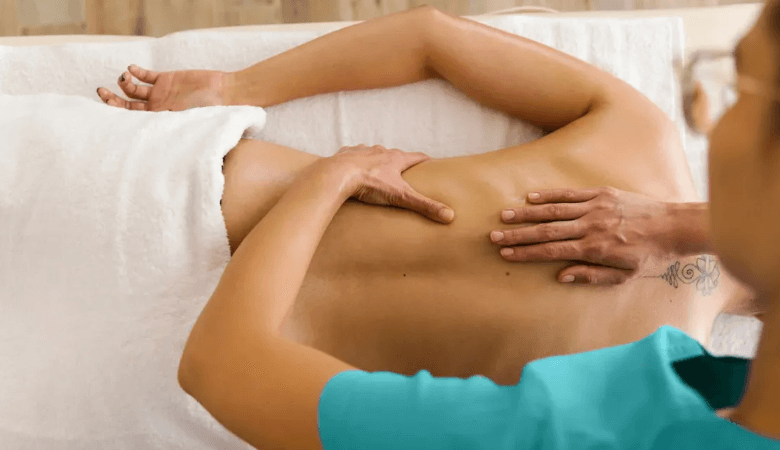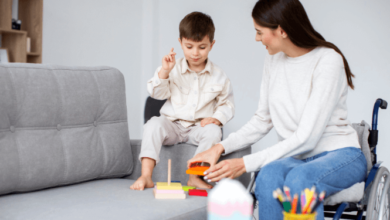How to Use Aromatherapy with Massage for Relaxation: 5 Powerful Techniques for Stress Relief

Aromatherapy combined with massage therapy creates a deeply relaxing experience that can help alleviate stress, reduce anxiety, and improve overall well-being. The soothing power of essential oils, paired with the therapeutic touch of massage, can work wonders for your mind and body. Whether you’re looking to enhance your self-care routine or seeking relief from the pressures of daily life, using aromatherapy with massage can significantly boost relaxation and help you unwind.
In this article, we will explore how to use aromatherapy with massage for relaxation, outline the benefits of this combination, and provide five effective techniques you can use to enhance your massage sessions.
1. Understanding the Basics of Aromatherapy and Massage
What is Aromatherapy?
Aromatherapy is the practice of using essential oils, which are derived from plants, to promote physical and emotional well-being. Essential oils are typically inhaled or applied topically, and they have been shown to influence mood, reduce stress, and even support physical healing.
What is Massage Therapy?
코리아밤 therapy involves the manipulation of the body’s muscles and soft tissues to promote relaxation and relieve tension. By applying various techniques such as kneading, stroking, and pressure, massage helps improve circulation, reduce stress, and alleviate muscle soreness.
Combining Aromatherapy and Massage
When aromatherapy is combined with massage therapy, the effects of both are amplified. The massage helps the essential oils penetrate the skin more deeply, and the aromatic compounds are inhaled, creating a multi-sensory experience that promotes deep relaxation and calmness. This powerful combination is effective in soothing both the body and the mind.
2. Key Benefits of Aromatherapy with Massage
Combining aromatherapy with massage offers a wide range of benefits, including:
Stress Relief and Relaxation
The soothing aromas of essential oils, combined with the calming effect of massage, work together to reduce cortisol levels (the stress hormone), helping you to unwind and relax.
Improved Sleep Quality
Many essential oils, such as lavender and chamomile, are known for their ability to promote restful sleep. When paired with a relaxing massage, these oils can help calm the nervous system and improve sleep quality.
Enhanced Mood and Emotional Balance
Certain essential oils, such as bergamot and ylang-ylang, are uplifting and help improve mood, reduce feelings of anxiety, and promote emotional stability. Massage enhances the emotional benefits by promoting a feeling of comfort and trust.
Pain and Tension Relief
Aromatherapy oils like peppermint and eucalyptus can help relieve muscle pain and tension. Combined with the therapeutic effects of massage, these oils provide relief for sore muscles, headaches, and stiff joints.
3. Top 5 Techniques for Using Aromatherapy with Massage
1. Aromatherapy Back Massage
A back massage is a great way to start your relaxation journey. Use essential oils such as lavender or frankincense, known for their relaxing properties, to create a soothing atmosphere. The massage targets the large muscles of the back, which often carry the most tension.
How to Do It:
- Mix a few drops of your chosen essential oil with a carrier oil like jojoba or coconut oil.
- Start by applying the oil blend to the back and use long, smooth strokes to relieve tension.
- Focus on areas with noticeable knots or tightness, using circular motions to ease the muscles.
2. Aromatherapy Hand and Foot Massage
Your hands and feet are areas that can easily become tense due to daily stress and long periods of standing or sitting. A hand or foot massage with aromatherapy oils can promote relaxation and reduce fatigue.
How to Do It:
- Select an essential oil like peppermint or eucalyptus to soothe tired feet or hands.
- Gently massage the oil blend into the soles of the feet or the palms of the hands.
- Apply light pressure along the pressure points to help release any built-up tension.
3. Scalp Massage with Essential Oils
A scalp massage can be incredibly relaxing, especially when combined with essential oils known for their calming and stress-relieving properties. Lavender, rosemary, and cedarwood are great choices for this type of massage.
How to Do It:
- Mix essential oils with a carrier oil (like olive or almond oil) and apply to the scalp.
- Gently massage in small, circular motions to stimulate circulation and relax the scalp.
- This technique can help reduce tension headaches and promote a sense of calm.
4. Full Body Aromatherapy Massage
For a complete relaxation experience, a full-body aromatherapy massage offers a holistic approach. Using oils like sandalwood, chamomile, or jasmine can provide deep relaxation and emotional healing.
How to Do It:
- Start by warming up the essential oils and massaging them gently over the entire body.
- Use long strokes for the limbs and circular motions for areas with more tension, like the shoulders and neck.
- Focus on deep breathing throughout the session to fully immerse yourself in the experience.
5. Inhalation During Massage
Sometimes, simply inhaling the aromas from essential oils during a massage is enough to enhance relaxation. Using a diffuser or a few drops of oil on a tissue, you can inhale the scents while the massage is being performed.
How to Do It:
- Place a few drops of essential oil in a diffuser or on a cotton ball.
- Breathe in deeply while the massage therapist works on your body.
- Choose calming oils like lavender, bergamot, or lemon balm for a peaceful atmosphere.
4. Choosing the Right Essential Oils for Relaxation
Different essential oils offer varying benefits when it comes to relaxation. Here are some of the most effective oils to use during a massage for maximum relaxation:
- Lavender – Known for its calming and sleep-inducing properties.
- Peppermint – Helps alleviate muscle soreness and mental fatigue.
- Frankincense – Promotes emotional balance and stress relief.
- Eucalyptus – Excellent for clearing the mind and relieving tension.
- Bergamot – A mood-lifting oil that reduces anxiety and promotes calmness.
- Chamomile – Ideal for easing muscle tension and promoting rest.
5. Safety Tips When Using Aromatherapy with Massage
While aromatherapy is generally safe, it’s essential to follow a few safety guidelines:
Dilution is Key
Always dilute essential oils with a carrier oil before applying them to the skin. This helps prevent skin irritation and allows the oils to be absorbed more effectively.
Patch Test
Before using any new essential oil, do a patch test on a small area of your skin to check for any allergic reactions or irritation.
Avoid Sensitive Areas
Be cautious when applying essential oils near sensitive areas such as the eyes, mucous membranes, and broken skin.
Consult a Professional
If you’re pregnant, breastfeeding, or have any medical conditions, consult a healthcare professional before using essential oils for aromatherapy.
Frequently Asked Questions (FAQs)
1. Can I use any essential oils for relaxation with massage?
It’s best to choose oils specifically known for their relaxing and stress-relieving properties, such as lavender, chamomile, and bergamot.
2. How often should I use aromatherapy with massage for relaxation?
You can incorporate aromatherapy with massage into your self-care routine as often as needed, whether it’s daily or a few times a week.
3. Can I perform aromatherapy massage on myself?
Yes, self-massage is effective! Use a small amount of essential oil and apply it to areas of tension, such as the neck, shoulders, and back.
4. Can aromatherapy with massage help with sleep issues?
Yes, using calming oils like lavender or chamomile in a massage before bedtime can promote relaxation and improve sleep quality.
5. Are there any side effects to using essential oils with massage?
When used correctly, essential oils are generally safe. However, always dilute oils and do a patch test to avoid skin irritation.
6. How long should a massage last for maximum relaxation?
A session typically lasts 30 to 60 minutes, depending on your personal preferences and the areas of your body that require attention.
Conclusion
Aromatherapy with massage is a powerful combination that can significantly enhance your relaxation experience. By using essential oils and massage techniques, you can reduce stress, alleviate tension, and promote emotional well-being. Whether you’re looking to relieve muscle pain or simply unwind, the healing properties of aromatherapy and massage can provide the perfect solution.
Incorporate these techniques into your self-care routine to experience the full benefits of this holistic practice.





